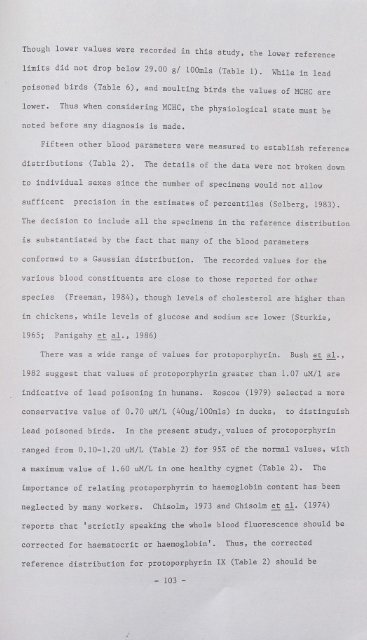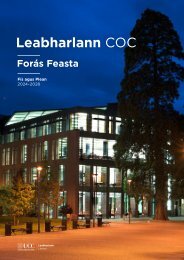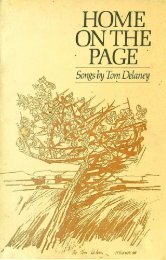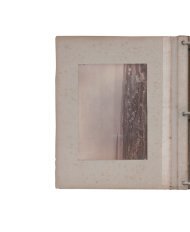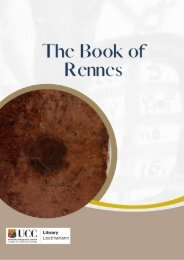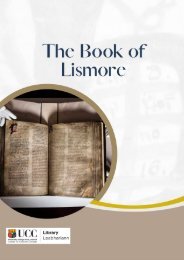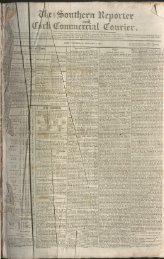Lead Toxicity in Mute Swans
LEAD TOXICITY IN MUTE SWANS Cygnus olor (Gmelin). By JOHN O'HALLORAN A thesis submitted to the National University of Ireland in candidature for the degree of Doctor of Philosophy September 1987
LEAD TOXICITY IN MUTE SWANS
Cygnus olor (Gmelin).
By
JOHN O'HALLORAN
A thesis submitted to the National University of Ireland
in candidature for the degree of Doctor of Philosophy
September 1987
Create successful ePaper yourself
Turn your PDF publications into a flip-book with our unique Google optimized e-Paper software.
i<br />
Though lower values were recorded <strong>in</strong> this study the 1 f<br />
, ower re erence<br />
limits did not drop below 29.00 g/ lOOmls (Table 1).<br />
While <strong>in</strong> lead<br />
poisoned birds (Table 6), and moult<strong>in</strong>g birds the values of MCHC are<br />
lower.<br />
Thus when consider<strong>in</strong>g MCHC, the physiological state must be<br />
noted before any diagnosis is made.<br />
Fifteen other blood parameters were measured to establish reference<br />
distributions (Table 2).<br />
The details of the data were not broken down<br />
to <strong>in</strong>dividual sexes s<strong>in</strong>ce the number of specimens would not allow<br />
sufficent precision <strong>in</strong> the estimates of percentiles (Solberg, 1983).<br />
The decision to <strong>in</strong>clude all the specimens <strong>in</strong> the reference distribution<br />
is substantiated by the fact that many of the blood parameters<br />
conformed to a Gaussian distribution.<br />
The recorded values for the<br />
various blood constituents are close to those reported for other<br />
species<br />
(Freeman, 1984), though levels of cholesterol are higher than<br />
<strong>in</strong> chickens, while levels of glucose and sodium are lower (Sturkie,<br />
1965; Panigahy et al., 1986)<br />
There was a wide range of values for protoporphyr<strong>in</strong>.<br />
Bush et al.,<br />
1982 suggest that values of protoporphyr<strong>in</strong> greater than 1.07 uM/l are<br />
<strong>in</strong>dicative of lead poison<strong>in</strong>g <strong>in</strong> humans.<br />
Roscoe (1979) selected a more<br />
conservative value of 0.70 uM/L (40ug/100mls) <strong>in</strong> ducks,<br />
to dist<strong>in</strong>guish<br />
lead poisoned birds.<br />
In the present study,. values of protoporphyr<strong>in</strong><br />
ranged from 0.10-1.20 uM/L (Table 2) for 95% of the normal values, with<br />
a maximum value of 1.60 uM/L <strong>in</strong> one healthy cygnet (Table 2).<br />
The<br />
importance of relat<strong>in</strong>g protoporphyr<strong>in</strong> to haemoglob<strong>in</strong> content has been<br />
neglected by many workers. Chisolm, 1973 and Chisolm et al. (1974)<br />
reports that 'strictly speak<strong>in</strong>g the whole blood fluorescence should be<br />
corrected for haematocrit or haemoglob<strong>in</strong>'.<br />
Thus, the corrected<br />
reference distribution for protoporphyr<strong>in</strong> IX (Table 2) should be<br />
- 103 -


